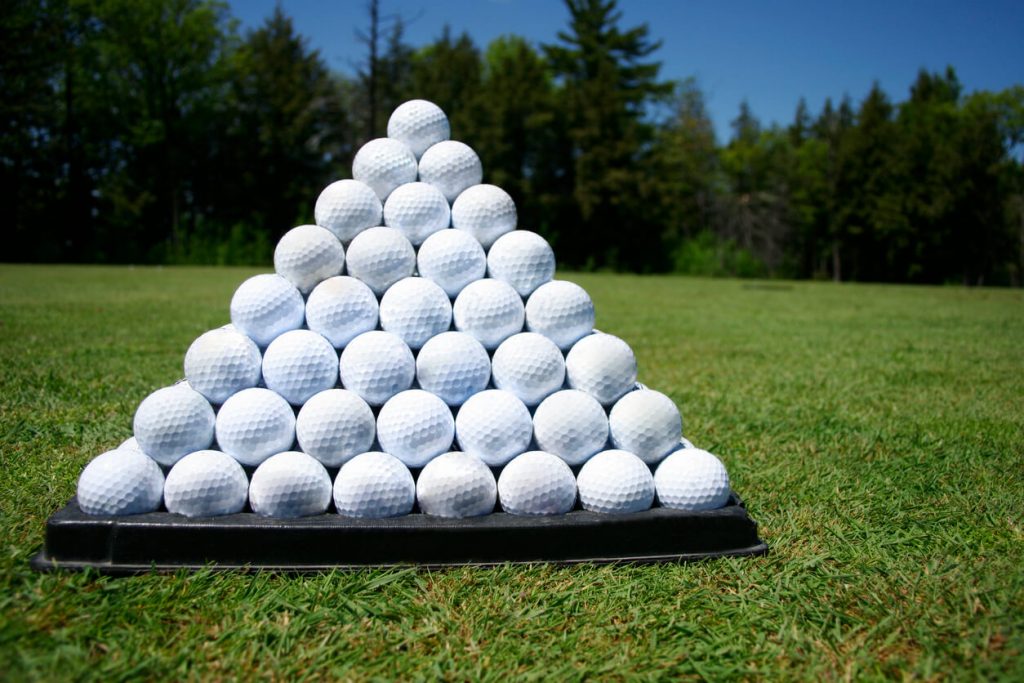How to choose the right golf ball

No matter what level you play at, taking some time to
identify the ball that suits your game is extremely worthwhile. In this blog,
we’ll look at how to choose the right golf ball.
You might think you’re too inconsistent to benefit from a
specific ball, but you would be totally wrong. Just as every golfer would
benefit from having clubs custom-fitted for them, the same is true of balls.
If you’re not convinced, just think about this one aspect of the game: putting.
Let’s say you use whatever ball you’ve found in the rough
or whatever ball you’ve been gifted as a present—how can you hope to have good
distance control?
Balls come with various different softnesses, so the same
putting stroke will produce a different distance on the same putt elsewhere
because of how the ball reacts off the face.
Golf is hard enough without making your putting a lottery just because you play any ball you can lay your hands on. So, how do you choose the right golf ball for your game?
How to choose the right golf ball

Price
By and large, you get what you pay for when it comes to golf balls. Pay for the top balls—such as the Titleist ProV1, Titleist Prov1x, Callaway Chrome Tour X, TaylorMade TP5x, Srixon Z-Star Diamond, and Bridgestone Tour B X—and you’ll get that delicious combination of length off the tee and maximum control of your spin around the greens.
These premium balls tend to be made up of a minimum three-piece construction (more on this later) and offer low driver spin and long distance while being ultra-soft around the greens.
In contrast, the best distance golf balls—which are generally the cheapest—are rockets off the tee but can come with some compromises in terms of short-game performance.
Generally, buying the ball you can most afford is always best, as it will perform better.
Feel


Our last point brings us nicely onto feel. One of the
good things about modern golf is that harder-feeling balls are now nothing like
the hard balls from the past. Think electric shock through the forearm if you
didn’t pure the strike!
Even firmer-feeling balls, like the Titleist Velocity, TaylorMade Distance+, Srixon Distance, or Wilson Staff Model X, feel soft compared to the harder balls of the past.
Most golfers prefer a softer-feeling ball, though, hence
why manufacturers have spent millions in research and development producing
models that melt into your clubface on impact, yet are durable and offer good
distance.
This is where something like the Srixon AD333, Callaway ERC Soft, or the Titleist Tour Speed and Tour Soft really come into their own.
The majority of golfers will probably find that these balls will suit their games and their pockets the best.
Spin


Some golf balls generate spin more easily than others,
usually because they have more layers. This is because the spin comes from the
layers reacting with each other.
Cheaper balls with two layers, for example, spin less than balls with five layers and are, therefore, less useful around the greens. However, boffins have refined balls these days so that the premium models, with four or five layers, offer incredible feedback and control on approach shots and around the green, yet don’t generate unhelpful spin off the tee.
To summarise, more layers equals good spin. Two layers—which
feature on the best distance golf balls, which can be good for beginners and
high-handicappers—equals acceptable distance, but less short-game control.
Five layers equals good spin off the tee and with your chips shots. This is why you can expect to pay £50 for a dozen of Titleist’s finest.
Material


Another key factor in spin and knowing how to choose the right golf ball is what the ball’s cover is made of.
Most of the best cheap golf balls have a Surlyn or ionomer cover, which creates less friction with the clubface than the urethane cover that you’ll find on the more premium models.
Alignment
Alignment is another factor in choosing the right golf ball.
The TaylorMade Tour Response Stripe, for example, has
taken alignment to a new level. Things have come a long way from simply drawing
a line on your ball with a Sharpie or even just lining the logo up on your line
of putt.
Alignment aids vary in size and style, and some people absolutely swear by them.
Colour


Last but not least, colour.
Gone are the days when the white ball was the go-to option on anything other than a frosty morning. Coloured golf balls are now viewed more favourably by some because of their improved visibility—whether that be to find them again or to simply look down on them as you stand over the ball and prepare your shot.
TaylorMade is arguably the leader in this market, allowing bespoke, custom designs. Your favourite football team’s badge on your golf balls? Why not!
How do you make sure you choose the right golf ball? Get in touch via our social media channels, and let us know!
Learning how to choose the right golf ball can take time, and you may make some mistakes along the way—but you’ll be a much better golfer in the long-run for taking the time to learn what’s best for you.
If you play golf regularly, you might want to consider protecting yourself and your gear with specialist golf insurance.
With Golf Care, policies include Equipment Cover up to £7,500, Public Liability of up to £10m, and Personal Accident Cover up to £50,000. Click on the banner below to learn more and get a quote.









